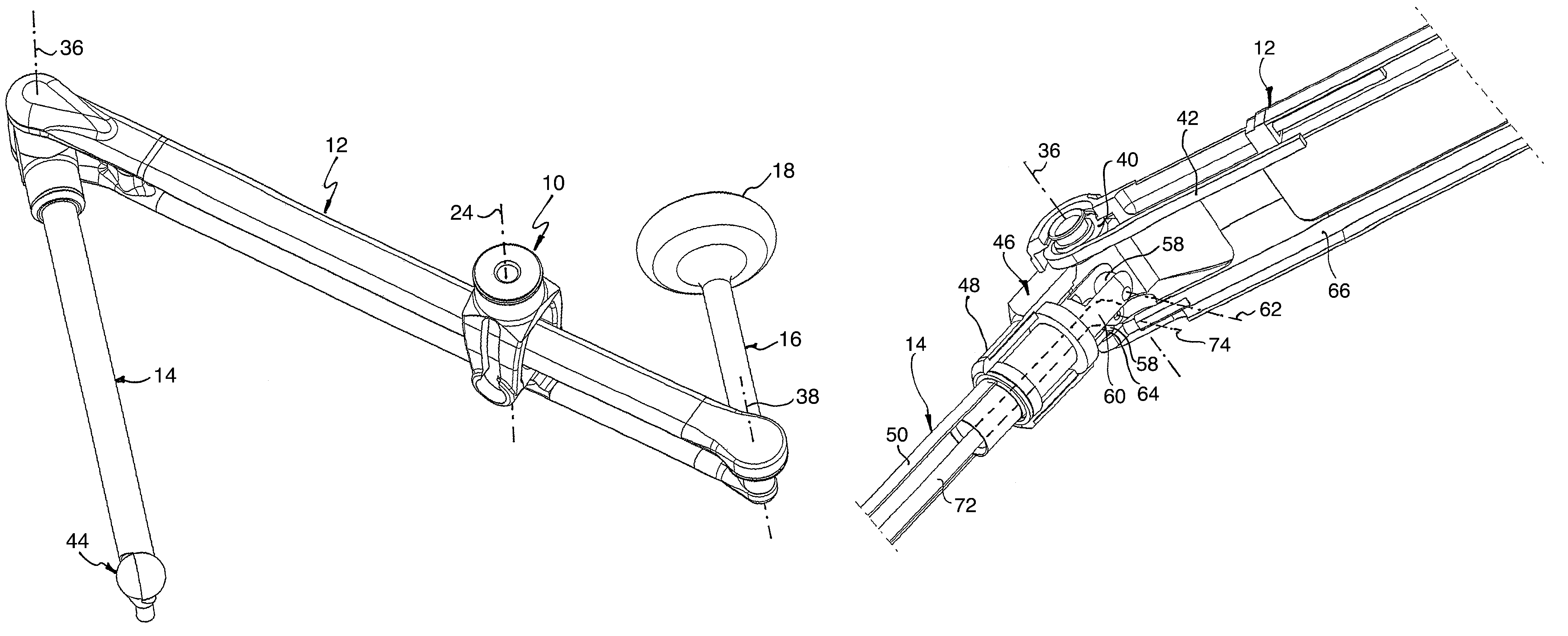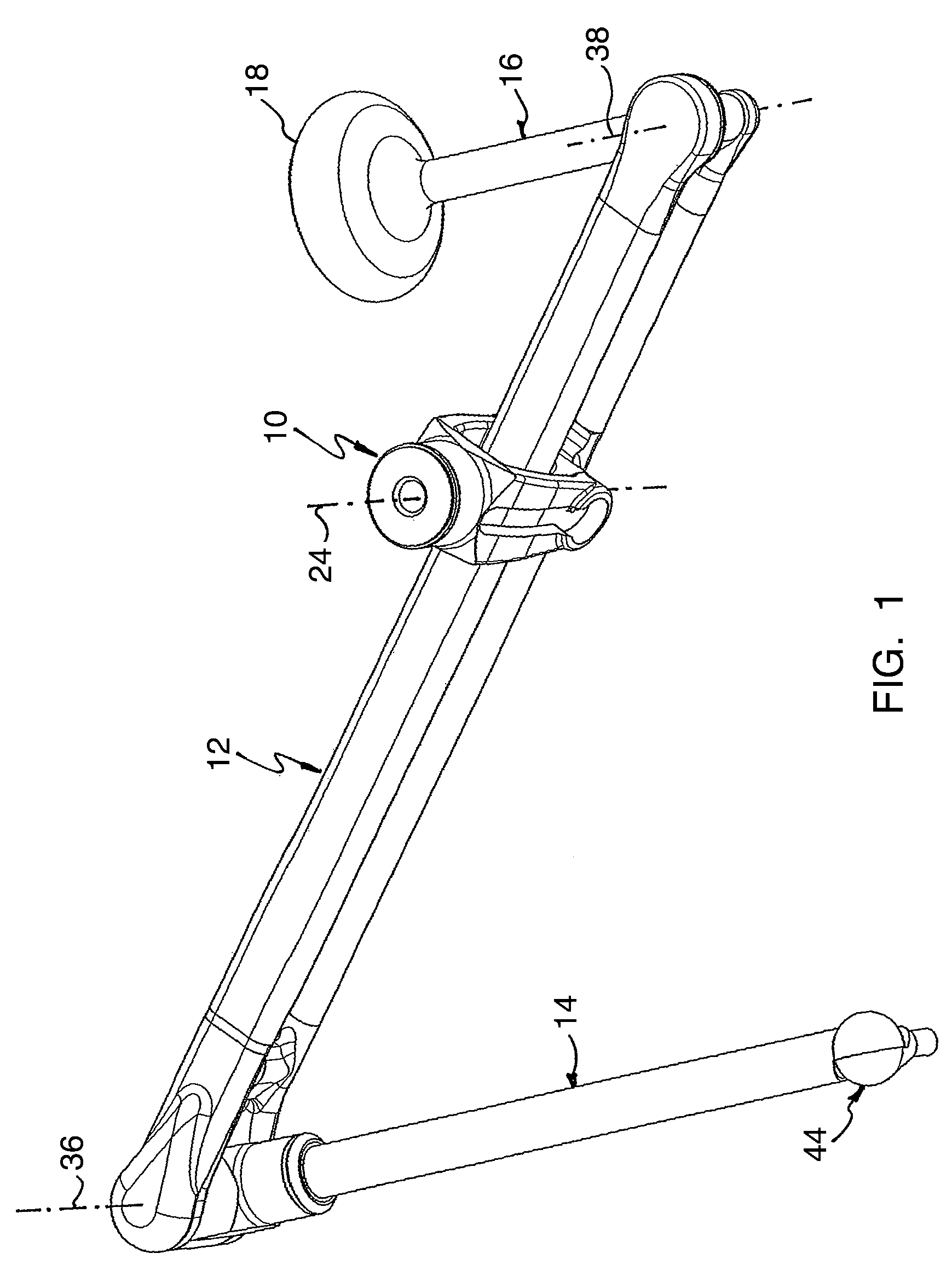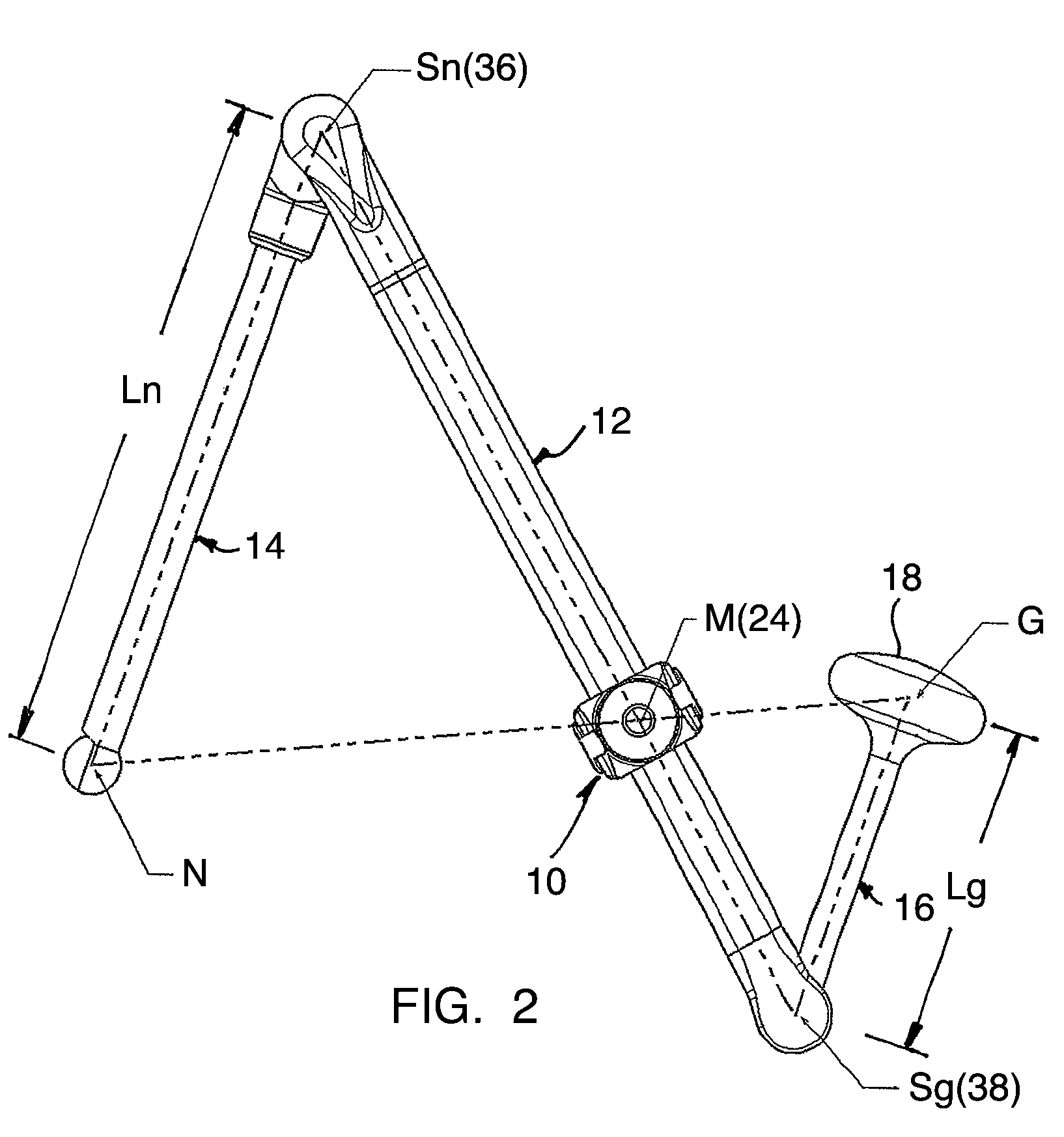Support for the holding and positioning of a utility load in space
a technology for space and utility loads, applied in lighting and heating apparatus, curtain suspension devices, lighting support devices, etc., can solve the problems of limited space for many applications, and the utility load cannot be positioned on a spherical surface, and achieve the effect of wide adjustment rang
- Summary
- Abstract
- Description
- Claims
- Application Information
AI Technical Summary
Benefits of technology
Problems solved by technology
Method used
Image
Examples
Embodiment Construction
[0020]The ceiling mounted support partially schematically illustrated in FIG. 1 includes a base 10 and an elongated supporting arm 12, to the two ends of which supporting arm are hingedly connected a first connector arm 14 for holding a non-illustrated utility load and a second connector arm 16 which carries a counterweight 18. The counterweight can in a non-illustrated way be adjustable in the longitudinal direction of the second connector arm 16.
[0021]The base includes a pedestal part 20 (FIG. 5) fixable to a space ceiling, on which pedestal part a fork-shaped bearing part 22 is rotatably supported for movement about a first vertical axis 24. Between the fork legs 26 of the bearing part 24 the supporting arm 12 is swingably supported (FIG. 5) on a shaft journal 28 for swinging movement about a horizontal axis 30.
[0022]The supporting arm 12 comprises an upper strut 32 and a lower strut 34 between which the first connector arm 14 is swingable about a third axis 36 and the second con...
PUM
 Login to View More
Login to View More Abstract
Description
Claims
Application Information
 Login to View More
Login to View More - R&D
- Intellectual Property
- Life Sciences
- Materials
- Tech Scout
- Unparalleled Data Quality
- Higher Quality Content
- 60% Fewer Hallucinations
Browse by: Latest US Patents, China's latest patents, Technical Efficacy Thesaurus, Application Domain, Technology Topic, Popular Technical Reports.
© 2025 PatSnap. All rights reserved.Legal|Privacy policy|Modern Slavery Act Transparency Statement|Sitemap|About US| Contact US: help@patsnap.com



